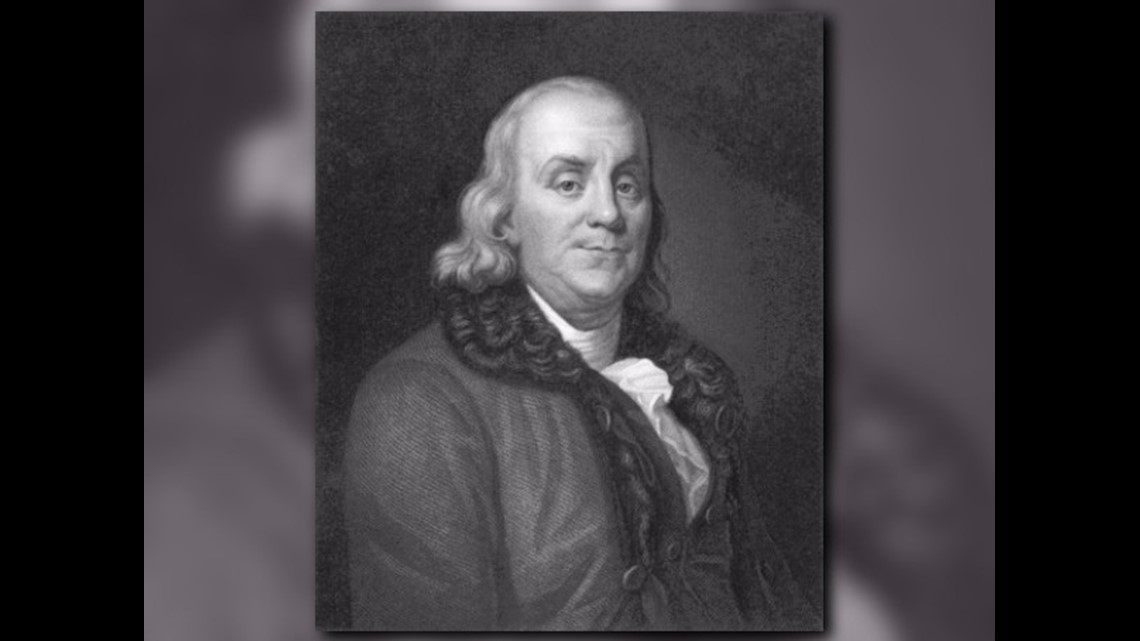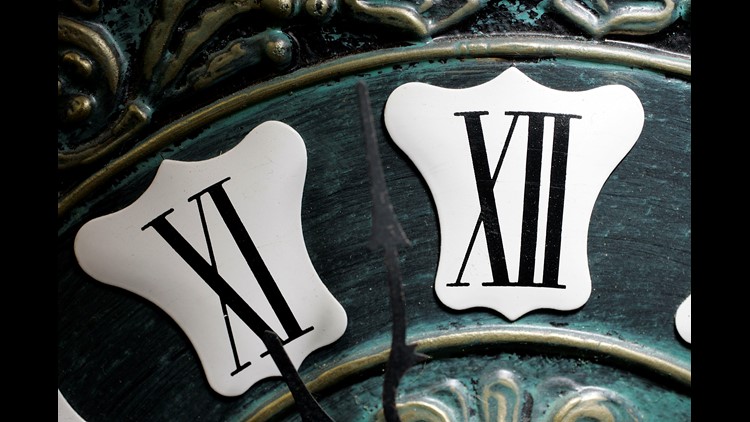ST. LOUIS — It's that time of year again! We're done falling back, or at least that's what Father Time is insisting.
Yes, at 2 a.m. Sunday morning, it's time to fall back and gain of sleep. Believe it or not, about eight months have already passed since losing an hour of sleep — something most people don't necessarily complain about. But even with the near future filled with shorter days and colder weather on the horizon, the world is anticipating being able to adjust their clocks just 60 'measly' minutes.
Although the concept of Daylight Saving Time has been a part of most of our entire lives, where did the original idea come from? Just how long ago was it enacted? Come with us down memory lane to explore the reason we may go to bed happier than usual.
Humble beginnings
Benjamin Franklin first conceived the idea during his days an ambassador to France in 1784. In his essay An Economical Project, Franklin said in part:
I went home, and to bed, three or four hours after midnight, with my head full of the subject. An accidental sudden noise waked me about six in the morning, when I was surprised to find my room filled with light; and I imagined at first, that a number of those lamps had been brought into it; but, rubbing my eyes, I perceived the light came in at the windows. I got up and looked out to see what might be the occasion of it, when I saw the sun just rising above the horizon, from whence he poured his rays plentifully into my chamber, my domestic having negligently omitted, the preceding evening, to close the shutters.
I looked at my watch, which goes very well, and found that it was but six o'clock; and still thinking it something extraordinary that the sun should rise so early, I looked into the almanac, where I found it to be the hour given for his rising on that day. I looked forward, too, and found he was to rise still earlier every day till towards the end of June; and that at no time in the year he retarded his rising so long as till eight o'clock. Your readers, who with me have never seen any signs of sunshine before noon, and seldom regard the astronomical part of the almanac, will be as much astonished as I was, when they hear of his rising so early; and especially when I assure them, that he gives light as soon as he rises. I am convinced of this. I am certain of my fact. One cannot be more certain of any fact. I saw it with my own eyes. And, having repeated this observation the three following mornings, I found always precisely the same result.
Friends of Franklin responded so positively to the idea that they continued to discuss the topic of a time change even after he had returned to America in 1785.


And it was all yellow
Although Franklin toyed with the idea of a dedicated time change, there was never any serious effort to make such a change until British builder William Willett's pamphlet Waste of Daylight in 1907. Willett was the first to seriously advocate such a change, proposing 20-minute changes during each Sunday in April, then retarding the same 20-minute changes during each Sunday in September.
Much like Father Time, Willett's great-great-grandson is also noteworthy: Chris Martin, lead singer of British rock band Coldplay. Might their song Clocks be a subtle reference to his great-great-grandfather? (Don't count on it.)


Onwards we go
Willett passed away in 1915, just eight years after penning Waste of Daylight. While Willett may have traveled on, his ideas continued his legacy. On May 17, 1916, Britain passed an act of adding 4, 20-minute intervals to the yearly timetable of Britain. The act was put into place less than one week later and was met with strong opposition, as well as misunderstanding.


A World War to change it all
Following the end of World War I, the Standard Time Act was established on March 19, 1918. Under this act, time zones and daylight saving were fully founded in the United States of America. However, daylight saving act would eventually be repealed just one year later in 1919 but was still honored in certain sections of the country.
For the next few decades, the idea of saving daylight was restricted to dedicated time zones. In 1966, the Uniform Act of 1966 helped establish the basic foundation of Daylight Saving Time in the United States. This move marked a spot on the calendar for the last Sunday in April and the last Sunday in October. Until 2007, Daylight Saving Time stayed on the same days each year. But under the Energy Policy Act of 2005, Pres. George W. Bush moved the dates from the second Sunday in March to the first Sunday in November.


Not all states follow the time change, however. Both Hawaii and the majority of Arizona neither spring forward or fall back, as well as Guam, Puerto Rico, the Virgin Islands and American Samoa. In total, around 70 countries in the world honor the Daylight Saving Time system, although each country has their own unique history of changing their clocks.
Fall back
Again, be sure to set your clocks back one hour beginning 2 a.m. Sunday morning. Most mobile devices automatically adjust to the corresponding time change, but whether you have work in the morning, or if you're coming home late Sunday night, or if you're just the type that thinks, "I'm probably going to forget, aren't I?" it wouldn't hurt to go ahead and change your clocks back that one hour.



